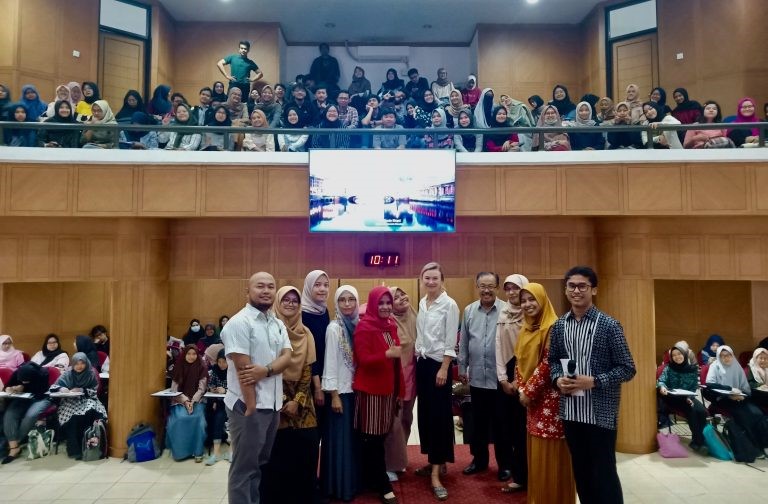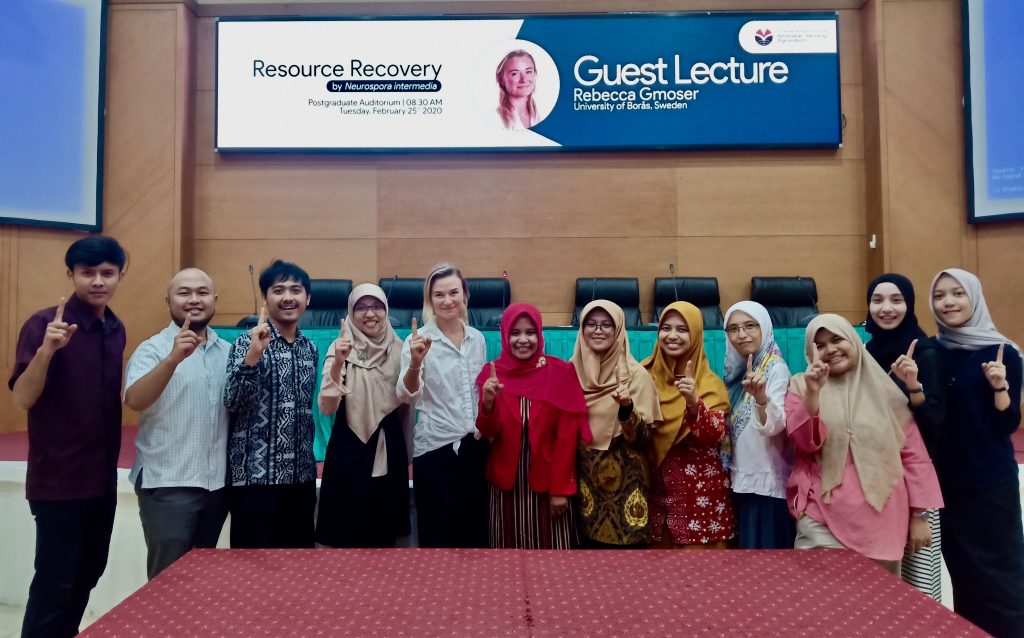The Agro-Industry Technology Education Study Program (PTAg) has held a guest lecture with the theme Resource Recovery by Neurospora intermedia with resource person Rebecca Gmoser from the University of Boras, Sweden on Tuesday, February 25, 2020 at the SPs UPI Auditorium. This activity received high enthusiasm from PTAg study program students. The resource person who is currently carrying out a PhD study with a focus on resource recovery studies shared the results of her research on the production of pigments and protein-rich foods based on Neurospora fungal intermediates.
The development of the industrial revolution resulted in increased use of resources and production of waste. Naturally, not all man-made waste can be broken down into resources, so a resource recovery process is needed. Resource recovery is an essential process for achieving natural cycle balance. One solution to accelerate the conversion of waste into resources is to use mushrooms.

Fibrous mushrooms are excellent foods because they are high in protein, have a texture similar to meat, and are a good source of fiber. Filamentous fungi can produce various kinds of pigments by fermentation. The resulting pigment depends on several environmental factors such as light, carbon and pH. Stains can be used as food coloring as well as a source of antioxidants. An alternative media for mushroom growth in the form of waste is used as a form of resource recovery.

Regarding food technology, resource persons develop products from stale bread through a reliable substrate fermentation process using fibrous fungi that are safe for consumption (GRAS / generally known as safe). Other protein-rich food products include mushroom biomass from starch-containing waste to mushroom-based burgers. Waste containing starch is used as an alternative medium for synthetic media. The production process of pigments and protein-rich foods must be environmentally sustainable to support the balance of natural cycles in nature.
Contributor: Sarah Istiqomah

